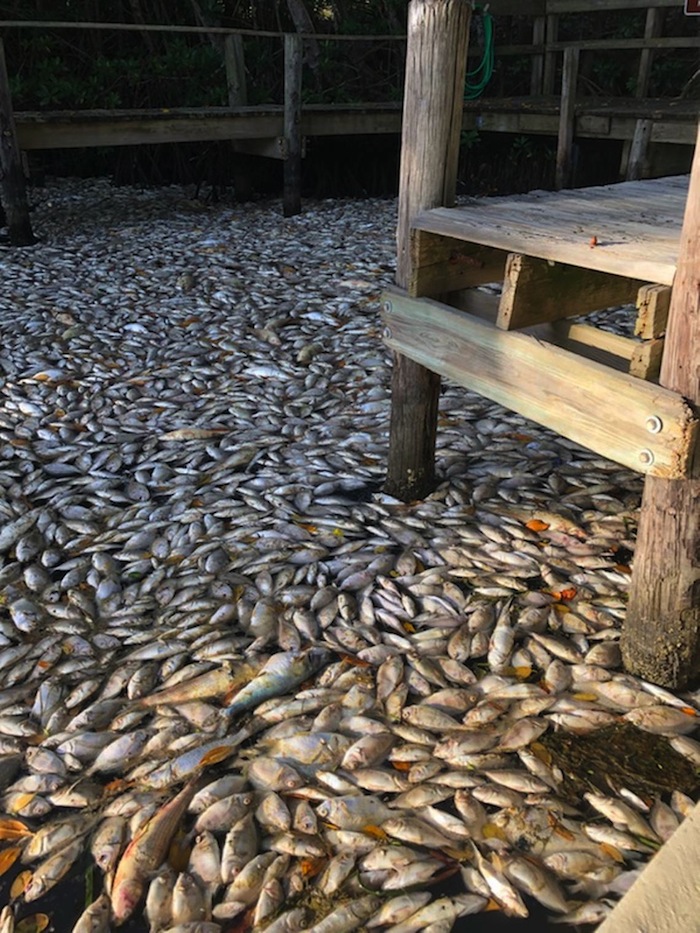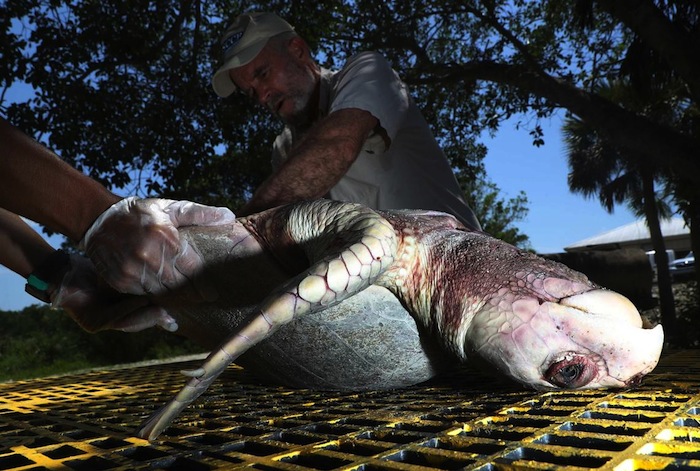
WARNING: GRAPHIC IMAGES
This is a tragedy ! Red tide, a type of marine algae that undergoes an explosive growth and begins producing toxins, typically occurs off Florida’s southwest coast every year between late summer and fall and spring. Due to currents and winds, some tides never reach shore. But this year’s tide, Florida Department of Environmental Protection officials say, is the worst since the last big tide in 2006, that lasted for more than a year and a half and killed more than 250 manatees.


Florida’s southwest coast, a ribbon of inlets and barrier islands normally brimming with wildlife, has become a red tide slaughterhouse this summer.
Dead fish by the thousands have clogged inlets and canals. Since Sunday, 10 dead Goliath grouper, the massive reef fish that can live four decades or more, have floated to the surface. At least 90 sea turtles have been found stranded as the tide stretches well into nesting season. And Tuesday, as hundreds of residents packed a standing-room-only Cape Coral yacht club to hear about the federal government’s efforts to deal with water conditions, a dead manatee washed up at a nearby boat ramp.
The list goes on: earlier this month the carcass of a whale shark was found on a Sanibel beach with red tide in its muscles, liver, intestines and stomach. Hundreds of double-breasted cormorants, brown pelicans and other seabirds have been sickened or died.
“This is horrific what we’re enduring now, but it needs to be a wake-up call to people that clean water is important to more than just wildlife,” said Heather Barron, a veterinarian and research director at Sanibel’s CROW Clinic wildlife rescue center, which began treating poisoned birds as early as October. “As the person dealing with all these hundreds of dying animals, I’m upset.”
Better known as a sheller’s paradise, Sanibel has started issuing residents a daily status report and calculated the size of kills at six fish for every foot of beach, Barron said.
Up the coast in Englewood, Paige Bakhaus laid off five employees after shutting down her paddle board tour concession at Stump Pass Beach in July and scaling back business to just a few hours on Don Pedro Island.


